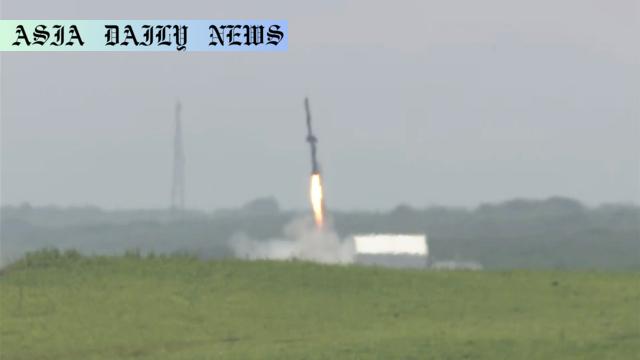Rocket: Taiwanese-made rocket launch halted mid-ascent in Hokkaido, failing to reach its planned altitude of 100 kilometers.
The Taiwanese-made rocket launched in Hokkaido failed to reach the target altitude of 100 kilometers.
The rocket’s first stage separated successfully, but the second stage lost flight during ascent.
No injuries were reported from this failed launch in Taiki Town.
The foreign-led endeavor brought attention to complexities in cross-country aerospace projects.

Taiwanese Rocket Launch Fails Mid-Ascent
The aerospace industry took a dramatic turn on Saturday, when a Taiwanese-developed rocket failed to achieve its targeted altitude of 100 kilometers during a launch at the Hokkaido Spaceport, located in Taiki Town, Hokkaido, Japan. The 12-meter tall, two-stage rocket, designed and built by a Taiwanese company, took off successfully at approximately 11:40 a.m. local time but encountered complications during its ascent. Though initial stages, including the separation of the first stage, appeared successful, the mission was ultimately cut short due to issues with the second stage.
Technical and Logistical Challenges of the Mission
According to reports, the second stage of the rocket began to lose stability during flight and was observed rotating uncontrollably before descending. While no injuries or serious damages were reported as a result of the failed launch, the unexpected halt brought attention to the significant challenges faced by many private aerospace companies entering this highly technical industry. The launch was conducted by a foreign company in collaboration with the Taiwanese manufacturing team, emphasizing the increasing globalization of space exploration efforts, yet also highlighting the risks that accompany these ambitious projects.
Safety Prioritized and Lessons to Be Learned
Local authorities and the spaceport’s managing company confirmed that safety precautions were well maintained throughout the operation. Despite the complications, no casualties were reported, emphasizing the crucial role of stringent safety protocols. Furthermore, experts believe that the failure presents valuable learning opportunities for all stakeholders involved, from engineers to business strategists exploring space as the next frontier. While it marks a setback, such incidents are not uncommon in the development of cutting-edge aerospace technologies.



Commentary
The Importance of Perseverance in Aerospace Innovation
The recent failure of the Taiwanese-developed rocket in Hokkaido serves as a vivid reminder of the immense challenges involved in aerospace engineering. While the unsuccessful mission may seem like a defeat to some, it is an essential step in a larger process of innovation and discovery. The aerospace industry is rife with complexities that demand precision, collaboration, and perseverance, and this event offers ample learning opportunities for both established and emerging players in the field.
Collaborative Ventures and Broader Implications
Another noteworthy aspect of this launch was the collaboration between a Taiwanese company and foreign organizations within the same corporate group. This global approach to research and development showcases the interconnectedness of today’s scientific community. However, it also underscores the need for stringent quality checks, effective communication, and an overarching vision that aligns varied initiatives to prevent such mishaps in future endeavors.
Conclusion: Charting the Way Forward
Failures like these, while disappointing, bring with them a wealth of insights for scientists, engineers, and corporate stakeholders. They test the resilience of individuals and organizations alike and challenge them to improve and innovate further. With lessons gleaned from this experience, the teams involved will no doubt refine their technologies and, hopefully, bring their next venture to fruition. After all, in the quest for success in space exploration, every setback is simply a stepping stone to progress.